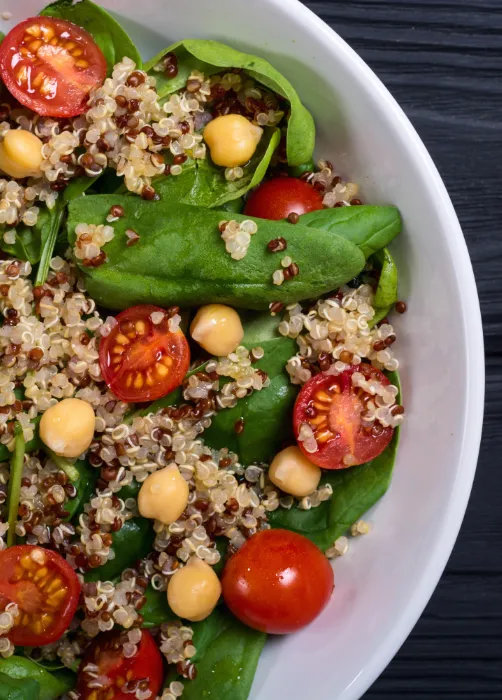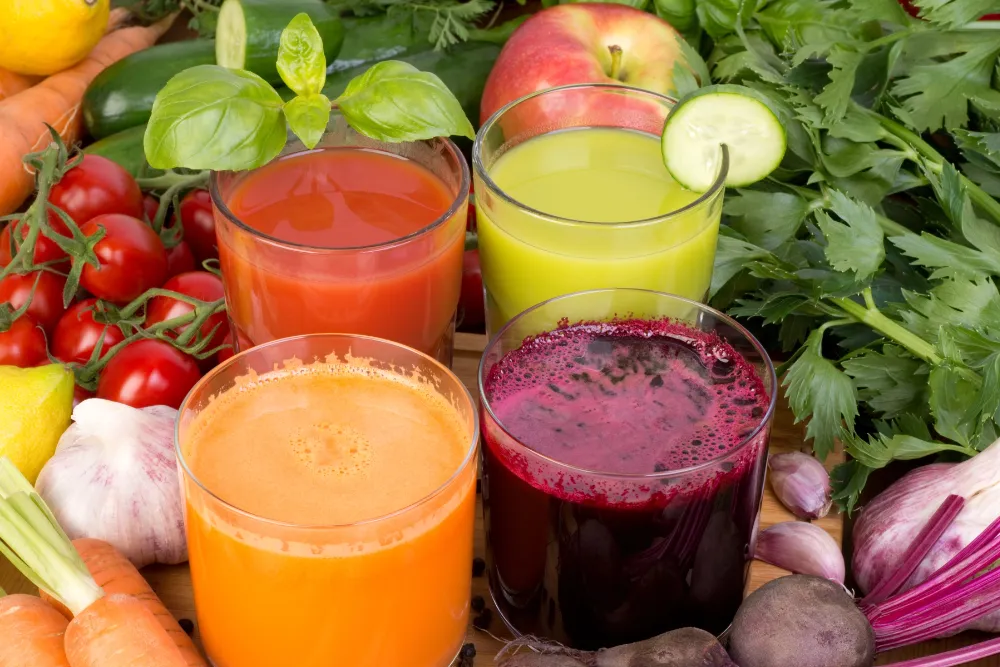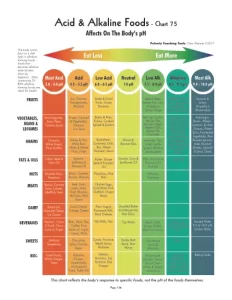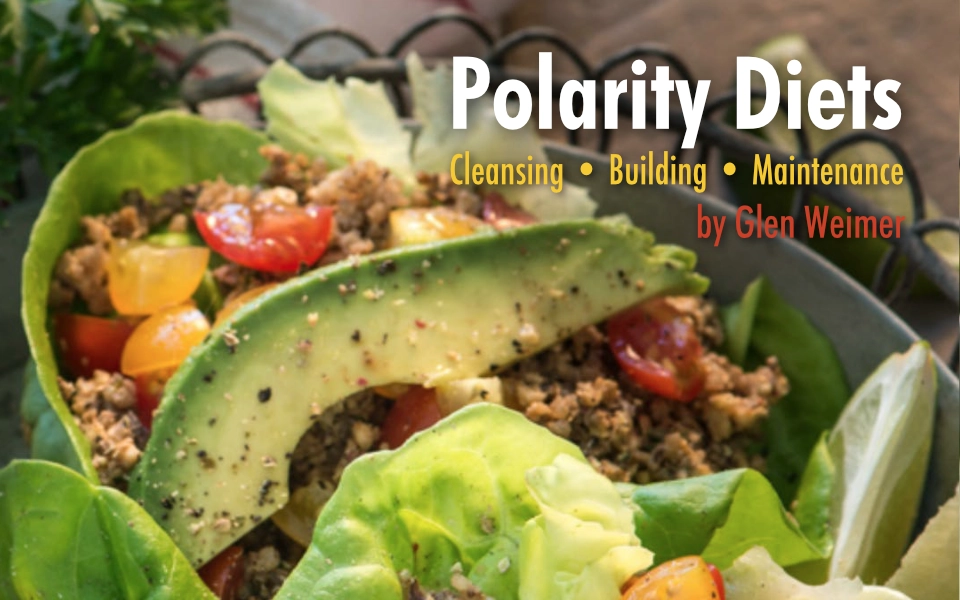Energy Nutrition
You are what you eat! It’s a universal maxim that happens to actually, literally be true. What goes into your body becomes your body; it’s what every cell is made from. Yet, more often than not, what, when, and how much we eat happens in order to stuff or calm our emotions, out of habit, as a reward, because of social obligation, as a quick pick-me-up, etc.
 When we consider diet from an energetic perspective, we consider how our foods affect our energy bank account (see Energy Bank Account). How much energy taken for the body to break down and utilize versus how much energy is it giving back? Polarity Therapy founder Dr. Randolph Stone, DO, ND, DC, looked at nutrition from this perspective, advocating energy-dense foods that are easily digestible.
When we consider diet from an energetic perspective, we consider how our foods affect our energy bank account (see Energy Bank Account). How much energy taken for the body to break down and utilize versus how much energy is it giving back? Polarity Therapy founder Dr. Randolph Stone, DO, ND, DC, looked at nutrition from this perspective, advocating energy-dense foods that are easily digestible.
You can probably rattle off numerous universal principles because we all hear them: Eat more organic fruits and vegetables, eat more live-raw or lightly steamed vegetables versus fried or overcooked ones, eat less or no meat, and so on. No matter where you are with your diet, there is ALWAYS room for improvement — or a next level.
The truth is, it’s an ever-shifting target because what your body needs at any given time is in response to what’s already in there. It requires more of what it doesn’t have and less of what it has too much of. It continually seeks a moving balance-point between building healthy tissue and removing the waste.
You are the chemist, and your body is your ongoing experiment. Be a wise scientist/detective. Do your research, get hard data on your current physiological state (like a gut biome test, bloodwork, etc.), then meticulously observe how your body responds to what you put in. You might want to keep a journal to note what you eat, when, how much, and the circumstances. Your body’s response may come hours later or over the course of days, which is why writing it down can be helpful. Also, you may be shocked at what you ‘conveniently’ omit out of guilt — even if you’re the only one reading it — Hmmm!
Do you get tired or need to nap after eating? Are you irritable, frustrated, or anxious? Do you have a headache, indigestion, bloating, or heartburn? Immediate diarrhea? Any adverse response may indicate ingredients, preparations, or amounts that are challenging for your system to process. At first, you may overlook some of the signs, but the cleaner your diet gets, the more sensitive you will become to notice the tiniest things that throw off your digestion.
Yesterday & Today
Energy Nutrition is the aspect of Polarity Therapy that has changed the most since Dr. Stone began writing about it in the 1940s. There have been significant scientific advances, including our understanding of the digestive system’s symbiotic relationship with the bacteria, viruses, and fungi that form our gut microbiome and our ability to track things like insulin resistance, mitochondrial uncoupling, ketosis, and immunoglobulin G (IgG) responses.
 Unfortunately, since Dr. Stone’s day, industrialized food production, driven by corporate profits, has mainly changed for the worse. There has been a massive increase in the use and applications of pesticides, including glyphosate, a depletion of vital soil nutrients, and radical genetic modifications (GMOs)1 to both the plants and animals that most people eat. Together, these decrease the nutrients available to build healthy tissues, increase our inflammatory response and gut permeability (leaky gut), and inhibit our cell’s ability to utilize the available nutrients and eliminate toxic waste.
Unfortunately, since Dr. Stone’s day, industrialized food production, driven by corporate profits, has mainly changed for the worse. There has been a massive increase in the use and applications of pesticides, including glyphosate, a depletion of vital soil nutrients, and radical genetic modifications (GMOs)1 to both the plants and animals that most people eat. Together, these decrease the nutrients available to build healthy tissues, increase our inflammatory response and gut permeability (leaky gut), and inhibit our cell’s ability to utilize the available nutrients and eliminate toxic waste.
Doctor Stone saw that those of us with the greatest need for nutritious diets were the very people who could least afford an expensive option. His solution was a low-cost, energy-based diet focused on increasing the food’s energy output while decreasing the body’s effort to break down and metabolize it. Our meals often have too many ingredients and sauces and are so difficult to digest that they ultimately leave us at an energy deficit rather than fueling vibrant health. Although more costly, today, growing your own or buying local organic and wild-gathered produce is the only way to be assured of avoiding many of these significant health pitfalls.
On the positive side, we are in the midst of a true food revolution, and the internet is weaving our world together as never before. Greater amounts of information are available at your fingertips than ever before. Once exotic and rare superfoods and superherbs from remote parts of the planet are now available delivered to your door with the click of a button.
Radio Metaphor
 When I was a kid, my older brother bought a ‘high tech’ transistor radio with AM, FM, and multiple UHF bands. It had two large knobs—one had a gyroscope action that whizzed the tuner from one end of the dial to the other in a blink. The second would fine-tune to the station you were looking for. A challenge I see in today’s superabundance of dietary information with conflicting systems of thought is that people are often confused and latch onto the latest trendy ‘magic pill’ supplement or superfood and miss the big picture of where their system is in relation to the fundamentals of what will serve their overall health. Essentially, they’re using the fine tuner but are at the completely wrong end of the radio dial for them. We need to made the big shifts to align with what serves our specific needs before fine tuning our diets.
When I was a kid, my older brother bought a ‘high tech’ transistor radio with AM, FM, and multiple UHF bands. It had two large knobs—one had a gyroscope action that whizzed the tuner from one end of the dial to the other in a blink. The second would fine-tune to the station you were looking for. A challenge I see in today’s superabundance of dietary information with conflicting systems of thought is that people are often confused and latch onto the latest trendy ‘magic pill’ supplement or superfood and miss the big picture of where their system is in relation to the fundamentals of what will serve their overall health. Essentially, they’re using the fine tuner but are at the completely wrong end of the radio dial for them. We need to made the big shifts to align with what serves our specific needs before fine tuning our diets.
The next few blogs aim to paint the broad strokes to help you get on track.
Polarity Diet Overview
Polarity Therapy identifies 3 types of diet to cycle through for optimal health. They support the body’s distinct needs at different times. We can utilize them over the course of days, weeks, or even within a single day. The first is the Purifying Diet, which is very alkalizing and helps the body detox and eliminate built-up toxic waste from the tissues and cells. It includes lots of vegetables, fruits, juice-fasting, and may include therapeutic techniques to aid detoxification such as colon hydrotherapy, skin brushing, oil pulling, neti potting, and tongue scraping.

The second is the Health Building Diet which adds in healthy proteins, grains and fats. Today’s passion for wild-gathered produce, superfoods, and super-herbs fits perfectly with this diet to rebuild comprehensive health in all tissues.
The Purifying Diet is specifically designed as a temporary course correction to avoid or recover from health issues, while the Health-Building Diet is the optimal diet for a vibrant life. By detoxifying then rebuilding and becoming conscious of our habits and food sensitivities/intolerances, we begin to recognize our body’s unique response to specific foods and food preparations.
The third is the Vegetarian or Maintenance Diet, which modifies the Health Building to become something you can live with long-term. The Maintenance Diet comes out of our new-found understanding and is the healthiest way of eating that we can actually live with every day. Dr. Stone advocated a strictly vegetarian diet, but you may want to add moderate amounts of organic free-range meats (grass-fed and finished) or wild-caught fish if that works better for your system and lifestyle today.
Note: Much of the standard commercial-farm liverstock are fed GMO grains wich can wreak havoc on the animal’s gut as well as yours. Additionally, because of overcrowded conditions, they are regularly given full-spectrum antibiotics, which also wreak havoc on your gut biome and immune system. And they are slaughtered under terrifying conditions which sends those hormones and chemicals into their blood. If you choose to include meats in your diet, when possible, go with a local farm where you can be assured of their farming practices.
Polarity Diets
1. Vegetarian/Maintenance Diet
Polarity’s Maintenance Diet is vegetarian. For some people, this will be a major first step that has never been considered before. For others, it may be their normal diet. Your personal starting point will determine how long you spend on each of these diets and even whether or not you are willing/able to go further beyond this diet. If possible, spend at least 2 to 3 days on each diet. Keep a Food Diary for each day. Take special note of how you feel in the hours following a meal.
The main pitfall I see when people switch to a vegetarian diet is that they simply swap meat for carbs. The way that the body uses protein and carbohydrates for fuel is very different, as is the difference between diverse types of carbs—from pastries to root vegetables, leafy vegetables, and grains. There are two important factors — 1) simple vs complex carbohydrates, namely the speed of digestion into simple sugars; and 2) glycemic index, namely the amount of simple sugar going directly into the sblood stream. Similarly, when people become gluten-free, they often increase the amount of carbs. And GF carbs tend to have a higher glycemic index. Ideally, you want a low glycemic, complex carbs that won’t immediately spike your blood sugar and will be slowly released into the bloodstream.
- Inclusions: Leafy Vegetables, Starchy Vegetables, Fruit/Vegetables, Sprouts, Grains, Dairy, Fruits, Cakes, etc.
- Exclusions: Animal Meats – Beef, Pork, Poultry, Fish, and Eggs
- Food Preparations: Raw • Steamed • Baked • Sauted
- In moderation: Breaded • Fried • Processed
2. Health Building Diet
The Health Building Diet is designed to boost the body‘s energy level and add fiber. It removes all fried and processed foods from the Vegetarian Diet and adds the ‘fiery‘ energizing qualities of grains to the purifying diet. This Diet has all the nutrients required to sustain you at an optimal level of health; it is a complete diet.
 One recommendation for modern eaters is to be aware of the types of fats you include in this diet. Modern research demonstrates the health benefits of both saturated and unsaturated fats. In the unsaturated fat category, there are currently three omega fatty acids, 2 of which we can’t produce internally and must get from our diet, namely omega 3 and 6. Omega-3 is anti-inflammatory while omega-6 is inflammatory. We need a greater amount of omega 3 to 6, approximately 2 to 1. Since most of us get plenty of omega-6, it is vitally important to increase and supplement omega-3s.
One recommendation for modern eaters is to be aware of the types of fats you include in this diet. Modern research demonstrates the health benefits of both saturated and unsaturated fats. In the unsaturated fat category, there are currently three omega fatty acids, 2 of which we can’t produce internally and must get from our diet, namely omega 3 and 6. Omega-3 is anti-inflammatory while omega-6 is inflammatory. We need a greater amount of omega 3 to 6, approximately 2 to 1. Since most of us get plenty of omega-6, it is vitally important to increase and supplement omega-3s.
We can get omega-3s from flax, hemp, and chia seeds/oils; walnuts; soybeans*; olive oil; cod-liver oil; fish (oils) like salmon, mackerel, sardines, herring, oysters, and anchovies; pasture-raised eggs; and meats and dairy products from grass-fed and grass-finished animals. We can get omega-6s from all tree nuts and their oils, milks, and butters such as almonds, Brazil nuts, walnuts, hazelnuts, macadamia nuts, pine nuts, pistachios, pecans, and cashews; some seeds and their oils such as grapeseed, sunflower, and cottonseed*; as well as corn oil*; soybeans and tufu*; and Mayonnaise. (Note: the meat, egg, and fish sources are not a part of this diet, but included here for a more complete list).2
For a long time, saturated fats were demonized in the health care industry. Today we see that both saturated and unsaturated are necessary and provide different benefits. Monounsaturated fats, like in olive oil, can help lower bad cholesterol levels in your blood, which can lower your risk of heart disease and stroke. Polyunsaturated fats, like flaxseeds, are high in omega-3, anti-inflammatory, and create flexibility in the cell walls, but they are highly sensitive to light and heat, so they can easily become rancid and aren’t at all useful for cooking. Saturated fatty acids containing less than 16 carbon atoms are highly stable molecules that provide energy, calories, and heat. The shorter the saturated fatty acid, the more readily it ‘burns‘ (oxidizes), and the more easily we can digest it. Our liver must process (metabolize) the fats and oils we eat. Poor digestion of fatty foods, and feeling tired, heavy, or nauseous after fat-containing meals can be symptoms of liver malfunction. Shorter-chain fatty acids are less taxing on our liver than longer ones and are preferable for health. Short- and medium-chain saturated fatty acids (SFAs) (4 to 12 carbons in length) are found in milk fat, palm oil, and coconut oil. Other animal and vegetable fats contain predominantly longer-chain SFAs (more than 14 carbons) and are found chiefly in meats, butterfat, and some vegetable oils. The longer the SFA the more ‘sticky’ and harmful. Trans-fats (like you find in margarins) are toxic and to be avoided at all costs. They are formed by heating saturated and unsaturated fats until the molecular structure is altered.
1 Note: Many commercial foods have been Genetically Modified. GMO (short for “genetically modified organism”) is a plant, animal, or microbe in which one or more changes have been made to the genome of plants, typically using high-tech genetic engineering to impatient toxic pesticides (Glyphosate) into a seed to make the plant pesticide-resistant. Currently, around 90-95% of all commercial Corn, Canola, Soybean, Cotton, and Sugar Beets. These crops are pervasive in most packaged foods in the forms of high fructose corn syrup, corn, corn oil, canola oil, and vegetable oil, soy, etc. Additionally, livestock are fed these GMO crops so they are showing up in all areas of the food chain. Large numbers of GMO Alfalfa, Papaya, Zucchini, and Summer Squash have also been introduced into the food market. (see GMO Blogs — 1, 2, 3)
2 Note: The Health Building Diet is strictly vegetarian. I have included animal sources of fats here for a more complete informational overview.
- Inclusions: Leafy Vegetables, Starchy Vegetables, Fruit/Vegetables, Sprouts & Microgreens, Mushrooms, Grains, Dairy, All Fruits, Ghee
- Exclusions: Animal Meats – Beef, Pork, Poultry, Fish, and Eggs • Melted/Heated Cheese • Refined Sugar
• Fried foods/Heated oils, butter, margarine, etc. - Food Preparations: Baked • Steamed • Raw • The preference is always the closest to raw and fresh (cooked at less than 108º)
3. Purifying Diet
The Purifying Diet is an alkaline diet designed for removing toxins from the bloodstream and opening the digestive tract. The Purifying Diet affects the release of old stagnant energies held within the acidic cell walls. The diet consists of foods that are easy to digest and bring vibrancy back to the whole being. Although freshly sprouted beans are highly recommended in all of the diets, you are especially encouraged to eat them liberally on the Purifying Diet. They are an excellent source of protein and nutrients.
- Inclusions: Sprouts, Leafy Vegetables, Fruit/Vegetables, Fruits, Superfoods and Superherbs
- Exclusions: Animal Meats – Beef, Pork, Poultry, Fish, and Eggs • Melted/Heated Cheese • Refined Sugar • Fried foods/Heated oils, butter, margarine, etc. • Starches • Beans • Grains (unless they are sprouted)
- Food Preparations: Baked • Steamed • Raw • The preference is always the closest to raw and fresh
 4. Juice Fast (optional but Highly Recommended)
4. Juice Fast (optional but Highly Recommended)
A one-day or several-day Juice Fast is an ideal way to complete the process of dietary cleansing. I would recommend low-glycemic vegetable juices. Use only freshly juiced (organic) produce. Good vegetables to juice are: Carrot • Celery • Beet • Cabbage • Spinach • Turnip. They can be juiced together or individually. Add an apple, lemon, and ginger for a great-tasting juice. (see Juicing For Health – Juicing For Life).
5. Back To Go
The last and most important step is the progression back through the diets. Take your time. Pay particular attention to the transition between Purifying and Health Building. Some grains and starches are harder to digest and may make you feel tired or sluggish. This may suggest a food intolerance. Remember True Understanding comes through personal experience! It is the process of reintroducing foods that can provide the most insight.

• Notes On Food Combining
For best results pay special attention to good food combinations. ‘Bad’ food combinations make the stomach work very hard, can produce indigestion, gas, fermentation, and make it more difficult for the system to extract the nutrients that feed the body. Additionally, most of the digestive process should happen in the mouth – chew your food thoroughly. Your body will produce saliva with the correct pH to begin breaking down the food and absorbing nutrients directly into walls of the mouth. The stomach cannot do all of the work. (See Charts 74-75)
- Good Combinations: Vegetables & Carbs • Vegetables & Proteins • Fats & Vegetables • Fats & Carbs • Acid & Sub-Acid Fruits
- Poor Combinations: Carbs & Proteins • Carbs & Sweet, Partially Sweet, Partially Acidic Fruits
- Best Eaten Alone: Melons • Dairy Products
Consciousness
One of the main tools used in Polarity Therapy is personal awareness through observation! My goal is to help you gain an experiential understanding of your own body‘s processes and return to you the responsibility and ability to care for own health!
Step 1
Examine Your Current Diet
- Begin by keeping a diary of everything you eat and drink for one week (minimum).
- Note the foods, the reasons why you are eating, your activities/thoughts/situations while you are eating.
- Bringing greater awareness to your diet is the key!
- Copy the Food Diary Chart so that you have one for each day you are observing.
- Review the results with your health provider.
Step 2
Explore Your Body‘s Response To Specific Foods & Food Combinations
Polarity‘s method of dietary cleansing is a two-fold process. (Recommended book: Health Building, Dr. Randolph Stone)
- Minimize the variety and improve the quality of the foods you eat & drink to detoxify/cleanse your system on a physical and energetic level
- Beginning from as clean and neutral a state as possible, reintroduce types of food one by one and observe your body‘s responses. Different foods can make your body feel differently:
- Energized • Sluggish • Tired • Wired/High Strung
- Bloated • Grounded • Spacy • Safe
- Often specific foods have emotions and memories attached, observe this as well.
Follow the below diets to the best of your ability and to the extent you are comfortable. Remember this is a learning process for you to better understand your relationship to food and how it affects you.
Step 3
The Polarity Diets, Vitality Drink, & Polarity Tea
 Polarity Tea
Polarity Tea
Polarity Tea is a special combination of herbs designed to soothe the digestion and assist in the elimination of mucus and waste. It can be taken all throughout the day. You might consider making a thermos of tea each morning to have all day long. For a contained amount of time it is recommended to drink as much as possible to flush the system. Note: Extended periods of drinking large amounts of fluids can overwork the kidneys.
Ingredients: Equal amounts of Licorice (or Aniseed), Fennel, Fenugreek, Flax, and Peppermint)
Directions: see Polar-TEA
Vitality Drink / Liver Flush
Polarity‘s Vitality Drink is a powerful liver flush. You may experience some queeziness caused by the toxins being drawn out of the body. There is no cause for alarm. Follow this immediately with at least two cups of the Polarity Tea. It will help to soothe the stomach and aid in the elimination process. Note: It is best to do an enema prior to the liver flush to clear the avenues of elimination.
Ingredients: 1 Apple,, 1 large Lemon, 1 Lime, 1 -4 Tbl Olive Oil (extra virgin, cold press), To Taste – a pinch of Cayenne Pepper + 1 clove Garlic and/or Fresh Ginger.
Directions: see Vitality Drink
References:
See these other Blogs on Polarity Health Building
- Vitality Drink
- Polari-TEA
- Diet For Life
- Energy Bank Account
- Juicing For Health – Juicing For Life
- Colon Cleansing: Step-by-Step Home Enemas
- How to Use a Neti Pot – with Daniel Vitalis
- What Is Polarity Therapy?
- Gut Reaction – Part 1
- Gut Reaction – Part 2
- Overwhelm – Part 2
- Fats that Heal/Fats that Kill
- Bio Hacking – Salt, Coffee & Butter
- Food Matters Podcast
- Real Cures with Dr. Joel D. Wallach
- Seeds of Death: Unveiling The Lies of GMO’s
- Jeffrey M Smith – GMO Foods Effects on Health, pt 1
- Jeffrey M Smith – GMO Foods Effects on Health, pt 2
- NPR’s Splendid Table | Extra Virgin Olive Oil
- Oil Processing & Health Risks – Don’t Use These Oils!
- Saturated Fats… Good for You? with Donald W. Miller, Jr., MD
- Dr. John Douillard: Fish Oil vs. Krill Oil
- Immune System with Daniel Vitalis – The Raw Food World, #225
- Marine Phytoplankton – Oceans of Nutrition with David Wolfe
- Blood Sugar: Why You Can’t Lose the Weight with Dr. Marlene Merritt
Disclaimer:
The information featured on this site is provided for information and education purposes only and is not intended to replace the advice of your doctor or health care provider on medical and/or health-related issues.
You should not use the information on this site for diagnosis or treatment of any health problem or as a substitute for medication or other treatment prescribed by your physician or health care provider.

